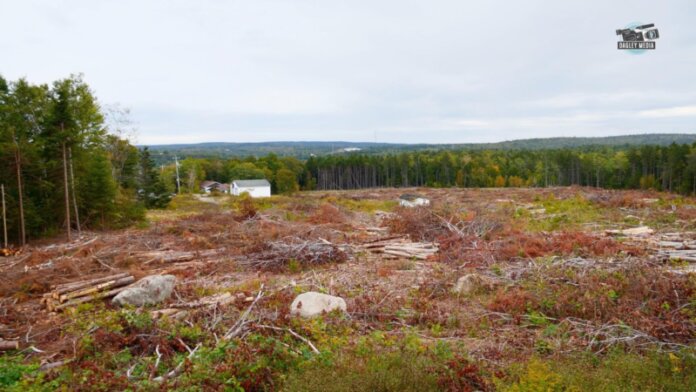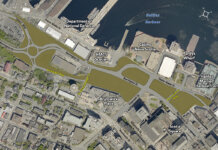WAVERLEY: A former local councillor in Fall River is taking issue with the municipality’s stance on its phosphorus bylaw and it being trumped by provincial approval of a contentious development on Fall River Road.
At the community meeting hosted by Councillor Cathy Deagle Gammon, and with MP Darrell Samson and MLA and Advanced Education Minister Brian Wong as panel members in attendance at the Waverley Legion, Barry Dalrymple took time to point out his disappointment that the by-law he was one to work on was not being followed in regards to the development known as the Carr Farm development.
According to HRM planning staff, because the provincial Department of Environment and Climate Change approved a sewage treatment plant that meets its standards, that approval overrides any development bylaws/policies the municipality has on its books, including the net-zero phosphorus rules created as part of the River-lakes Secondary Planning Strategy of the Municipal Planning Strategy for Planning Districts 14 and 17, in 2012.
ADVERTISEMENT:
At the meeting, Dalrymple was one of the speakers.
He didn’t mince words when given the chance to speak, focusing on the HRM ignoring its own net-zero phosphorus by-law—one he worked on when he was councillor.
“There’s been some talk about the sewage treatment plant associated with the development on the Carr property, and I don’t care what level, municipal or provincial talks about whatever,” he said.
Dalrymple was the chair of HRM’s environmental committee and spent two-and-a-half years studying and developing a phosphorus neutral downloading bylaw.
“At the time, approximately 10 years ago, it was widely hailed across Canada as the foremost treatment and best bylaw passed by any municipality in all of Canada.”
“Regardless of whoever tries to get around that, that bylaw has been thrown to the wayside, turfed into the garbage, and run over on that development. It is not phosphorus neutral, not in any way, shape, or form.”
ADVERTISEMENT:
In the by-law backgrounder from HRM planning documents in 2012, it said the intent of the policy is to protect the Shubenacadie Lakes from further deterioration by controlling the amount of phosphorus emitted into the receiving waters from large scale development.
Phosphorus is a chemical constituent that naturally occurs in the environment and from human activities such as the application of fertilizers and human waste.
Phosphorus can become bound up in soils, vegetation, and rocks if it does not exceed the natural capacity of the environment to absorb it.
An abundance of phosphorus can be released from land development activity which can cause a lake to become eutrophic long before its natural time.
To stem the decline of the Shubenacadie Lakes, Policy RL-22 requires a study to verify that there will be no net increase in phosphorus emissions from a large scale housing development or a commercial development after a proposed development takes place.
In 2019, Regional Council approved rezoning with amendments to the municipal planning strategy and land-use bylaw for development on the Carr Farm site.
The bylaw amendments specify that a proposed development on this site will only be permitted if a study shows no increase in phosphorus, or if an increase in phosophorus is predicted, that methods will be taken to reduce phosphorus levels to the level that existed before the proposed development, such as through reduction in density or building footprint.
ADVERTISEMENT:
Councillor Cathy Deagle Gammon spoke about the bylaw early in the meeting.
“The huge concern and thought that HRM bypassed their own phosphorus bylaw, and the phosphorus bylaw championed by our previous councillor Barry Dalrymple,” said Deagle Gammon.
“We went to HRM staff and asked them if we did bypass our own bylaw. What was said was that the province trumps HRM’s bylaw, and the province approved it.
“That’s where we’re at.”






















